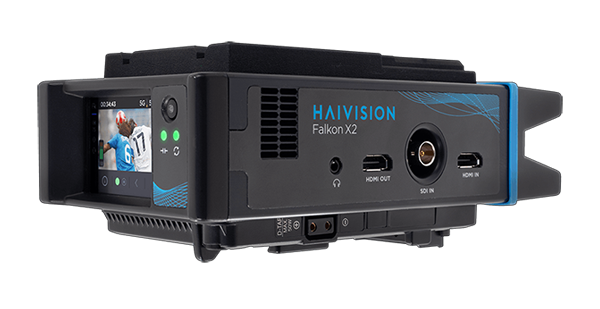Live streaming video is being used by more and more enterprise companies as a means of engaging their employees wherever they may be. They’ve come to understand the value of being able to reach everyone in a way that’s interactive and engaging, and the investment is paying off in spades. And few companies know this better than SAP, the world’s third largest software company, employing more than 85,000 people worldwide.
Let’s take a look at how SAP uses video to keep their employees in the loop and keep everyone working towards a common goal, and find out a bit about the tools they’re using along the way.
Who’s behind SAP’s internal video streaming services?
SAP’s North American headquarters are located a little ways outside of Philadelphia in Newton Square, PA. It’s the spot where, occasionally, you’ll find Ryan Bentz, an Event Manager for Interactive Broadcasting Solutions at SAP.
Ryan’s in charge of making sure that the live streams for many of the events that go out to SAP employees through live streaming video make it from the source to the many screens that the events get watched on.
What’s really fascinating is just how often events go out over live streaming video. Because there are so many employees in such a wide range of locations, Ryan works with a team who are dedicated to these endeavors.
SAP uses their own proprietary enterprise video solution to send secure streams to wherever employees are watching. A private link is sent to all relevant employees, and they log in using a single sign-on, removing a bit of friction from the prospect joining the live event.
Whether it’s a regional sales meeting, or a larger event including all employees in North America, Australia, Asia, or Europe, live streaming video is a huge part of the company culture at SAP, and crucial to the communication workflow.
Why video is so important to the culture at SAP
Messaging is crucial to the success of any large company. They need to make sure that everyone is on the same page, and that they have all the information they need to be successful.
When the message is important, a phone call just doesn’t cut it. When you can actually see someone showing their passion and sharing everything they need to about the content, it gives employees a sense of the importance of the message. And it allows them to feel more like they’re a part of the plan; that they’re involved.
SAP also delivers all hands meetings throughout the year, and they use live streaming video to get their message out to everyone involved. One of the reasons live video is so important is that it allows them to have a Q&A session at the end, which allows people to get clarification and to ask relevant questions. Obviously something that you can’t do with a recorded message.
Providing a VOD gives people the opportunity to watch, but there’s always the chance that the person might just keep putting it off and never get to it. A live stream is more of an interactive community, which gives employees a lot more incentive to watch the live event.
Preparing for, and executing live webcasting events
One of the biggest parts of Ryan’s job at SAP is to travel to different locations where events are being held in order to manage the live stream from there. They’ll hire a local events management company for the bulk of the setup — bringing in cameras and audio equipment and getting all that set up, and sending those feeds to a trickster where it’s all produced— and then Ryan manages the raw feed that comes from there and makes sure it’s distributed across the network.
To do that, Ryan uses two KB Mini encoders. Why? They’d had other equipment previously, but because Ryan is constantly traveling, having equipment that you can’t just take with you is a pain from both a logistics and a monetary standpoint.
No one likes to pay to ship large, heavy boxes, and no one likes to have to send them well in advance of an event and have to have several people involved in getting equipment to and from an event.
Here’s what Ryan says about using the KB Mini encoders:
From the standpoint of being able to get on a plane with my one personal item and my one carry-on item, and being able to put the KBs in the bag and get it on the plane with me, and being able to walk off the plane knowing I have my equipment with me, it’s invaluable, and is saving us all tons of time all around.
Having the freedom to be able to just show up and get set up immediately is critical to Ryan’s workflow. He’s freed up from having to spend an entire day on setup, and can just plug in, get the DHCP right away — whereas, in the past configuration may have taken half a day and even more when involving the network people at the event centre — gives him the ability to concentrate on other areas of production that are critical to ensuring the success of the live webcasts.
Multiple recorded files of the live streamed events are also made on the KB Mini in high quality, which allows others to be able to take the raw files and edit them, and offer them as Video On Demand files on their internal network.
What live streaming video really means to a company
I probably don’t have to convince you that live video streaming is the best way for big businesses to engage their employees these days. It’s still important to see how other people are doing it, and to understand what the tools are that are driving their success.
You don’t get to grow from five founders in 1972 to more than 85,000 employees worldwide like SAP did without proper communication. You don’t get that communication without the proper tools, and the right people to manage the workflow.
Take a page out of SAP’s playbook: make sure that you have tools of the highest quality, and that you have the right people in place to make your investment in live streaming video worthwhile.
No one notices when things go smoothly (but everyone notices when something goes wrong), and managing events like this can be a thankless job. So the next time you see someone from your company that helps to make your live video streams work flawlessly, make sure to say thanks!


























